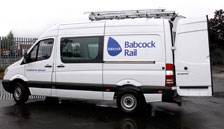
Business profiles - fleet - Page 23
Small Fleet - Hannaford
Hannaford, a project management and construction company based in Hertfordshire, recently appointed a full time fleet manager, Leigh Stiff, after Hannaford accountant Matt Vier struggled to cope with the growing demands from legislation and fleet responsibilities.
Training - Blaenau Gwent County Borough Council
Blaenau Gwent Borough Council operates a fleet of more than 200 vehicles. The Council has recently employed a new Transport Manager and when this member of staff took over this role, he suspected that driver training was not as effective as it should be.
Environment - Laing O'Rourke
The initial focus has been on changing the company car list and providing staff with information to encourage low-emission vehicle choice, checking employee driving licences and encouraging staff to use the public shuttle bus service.
Grey Fleet - North Lincolnshire and Goole NHS Foundation Trust
North Lincolnshire & Goole and Tees, Esk & Wear are two NHS Trusts that have tackled the issue of grey fleet. Read the case study to find out more about how they have achieved better management of grey fleet.
Fleet management - Newport City Council
Newport City Council operates a fleet of around 400 vehicles. The net cost of the fleet in 2006/2007 was nearly £4.5 million. Until 2004, the Council’s standing orders dictated that when procuring items or services, the supplier offering the lowest price should be selected. This meant that the procurement process focused on cost rather than quality or value for money.
Fleet management - Lewis Day Transport
From day one, Hylton Treisman has been cutting costs at Lewis Day Transport. His appointment three years ago coincided with a period of rapid growth at the London-based transportation company – its fleet of vans, cars and motorcycles has almost doubled from 700 to 1,200 units. And all the while, Treisman has been finding new ways to reduce overheads.

















